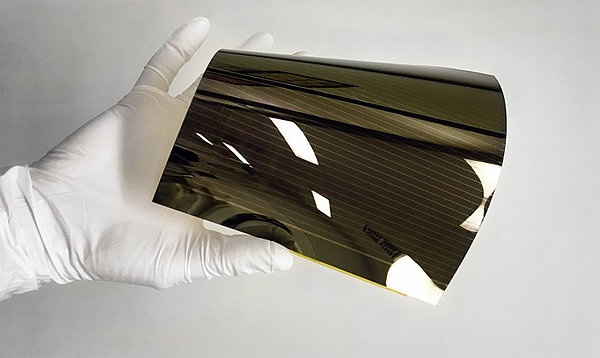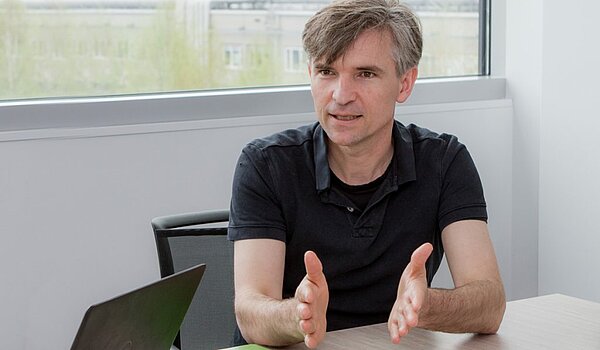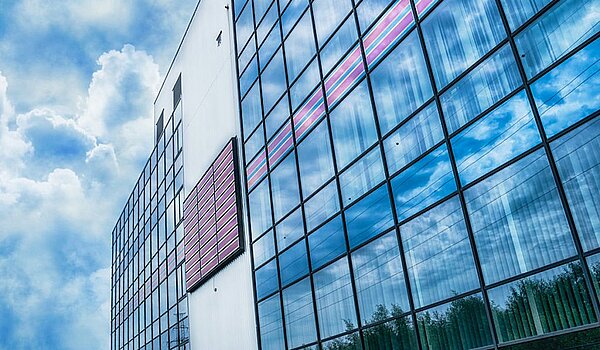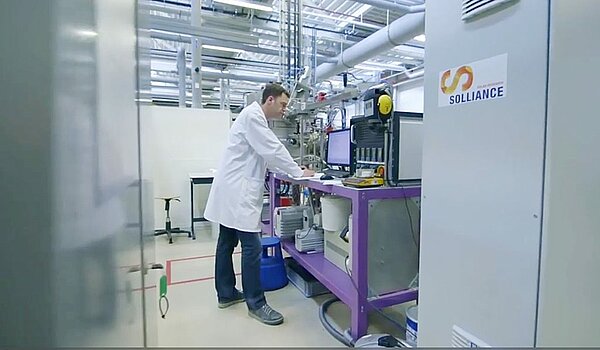Solliance



Technology
Perovskite-based solar cells – young technology but extremely promising
Glass or foil on glass that generates energy and blocks sun light, is an example of a way in which Perovskite-based solar cells can be applied. Research into Perovskite-based solar cells is still very young but expectations are high. This is illustrated by the enormous number of publications that have been written on the subject since the first paper was published in 2009. Not to mention the great number of patents that have been filed in this field.
Perovskites
Perovskites are a class of materials that share a similar structure, which display a myriad of exciting properties like superconductivity, magnetoresistance and more. These easily synthesized materials are considered the future of solar cells, as their distinctive structure makes them perfect for enabling low-cost, extremely efficient photovoltaics. They are also predicted to play a role in next-gen electric vehicle batteries, sensors, lasers and much more.
Advantages
Perovskite has a crystal structure that takes its name from a Russian researcher. Using perovskite as a semiconductor in PV modules has important advantages. A few of these advantages are that raw materials that are required to produce this semiconductor perovskite are very cheap. You only need a very thin layer of perovskite in a solar cell, resulting in even lower material costs and Perovskite can be applied with a relatively simple deposition process (the application of the layers on a given substrate), so that no expensive machines are required.
Global Fore runner
Solliance is a global forerunner when it comes to research into this new technology. The research the organization does into the deposition methods (sheet-to-sheet and roll-to-roll processing) are quite unique in the world. Roll-to-roll processing is a scalable, industrial process which is cost-efficient. It can be printed and used in a customized manner.

Talent
“We work on a completely new technology. What we do is extremely innovative.”
Senior Researcher Dr. Yulia Galagan and program manager Sjoerd Veenstra both work on the Solliance Shared Research Program on Perovskite-based solar cells. They are true pioneers as research into Perovskite is still quite an unexplored area. “Perovskite is completely new, what we are doing is extremely innovative,” Yulia says. Sjoerd underlines this and add that Solliance probably is one of the coolest places you could work at: “the team we work with is extremely motivated and this gives you a lot of energy. It is great to work on this topic and fight climate change.”
Experts from all over the world
“Our team is entirely international,” Yulia continues: “we work with team-members that come from all over the world. I originally come from the Ukraine, but have lived in Eindhoven for ten years now. It is a great place to work with a good infrastructure, a lot of internationals and a lot of experts. Education for children is also good. My daughter is in a multi-langual secondary school.”
Collaboration with other organisation leads to career opportunities
“In this program a lot of R&D institutes and industrial partners are involved. This makes it easy to experience what chances other organisations offer you. This offers professionals various career opportunities and possibilities for personal growth.”

Societal impact
Power windows and more
Perovskite- based solar cells in future could be used for a wide range of applications or products. Power windows are the most striking example as they could cause a major breakthrough when it comes to generating solar energy in large cities and densely populated areas. Apartments, skyscrapers and other large buildings usually do not have a lot of space on the roof but they often do have large window surfaces. Power windows generate energy in a very efficient way and at the same time block sunlight. Power windows could contribute greatly to fighting climate change.
Highly functional and beautiful
Other future applications or products for example could be screens of smart devices or rooftops of cars. In this way the screens or rooftop could charge the device or car. Technologies similar to perovskite are already on the market today. But not with such a high efficiency and not without seeing pixels on the glass or foil. There are a few approaches towards translucent pv windows. Solliance’s approach makes it possible to make windows fifty percent more transparent which is needed to make glass or foil that is suitable for various purposes, such as windows in apartments.
The application is leading
“We want to make PV beautiful,” says Sjoerd. “And that is what we are experimenting with. Making it flexible, giving it another colour… etc. For realising this you have to think in a reversed way. We want the application to be leading and add the elements that are needed.”

Brainport factor
Strength of the program lies in research organisations and industry joining forces
The development of the Perovskite-technology and its applications is done in a joint program of several parties among which are Holst Centre, TNO/ IMEC, five universities and industrial partners. In this research program fundamental and applied research come together. “If these organisations would work on the same technology separately, we would never have achieved the results we have reached now,” senior researcher at Solliance, Yulia Galagan says. “In this field of research, we are in a league with the best in the world. This is the absolute yield of combining forces. The roll-to-roll processing for example is a technology of Holst Centre."
We can use all facilities and equipment you could think of. The only limits are our brains.
“Moreover, we have got all the research facilities and equipment we could think of at our disposal,” programme manager Sjoerd Veenstra adds. “The only limiting factor is our own brain. We have got all the facilities needed for experimenting to our hearts’ content.”
Brainport Eindhoven – a lot of high tech expertise and international knowledge structures
“The advantages of the fact that Solliance is located in the Brainport Eindhoven region are that we can quickly connect expertise. If we need laser expertise, a good laser researcher is available, it is good that there are many tech companies here with a lot of experience that are willing to cooperate, We need creative people and they are available in Brainport. It is also good that the Eindhoven area has a strong link with an international knowledge structure. Basically we compete with other strong regions in the world, if you want to compete and have impact you’d better collaborate.”